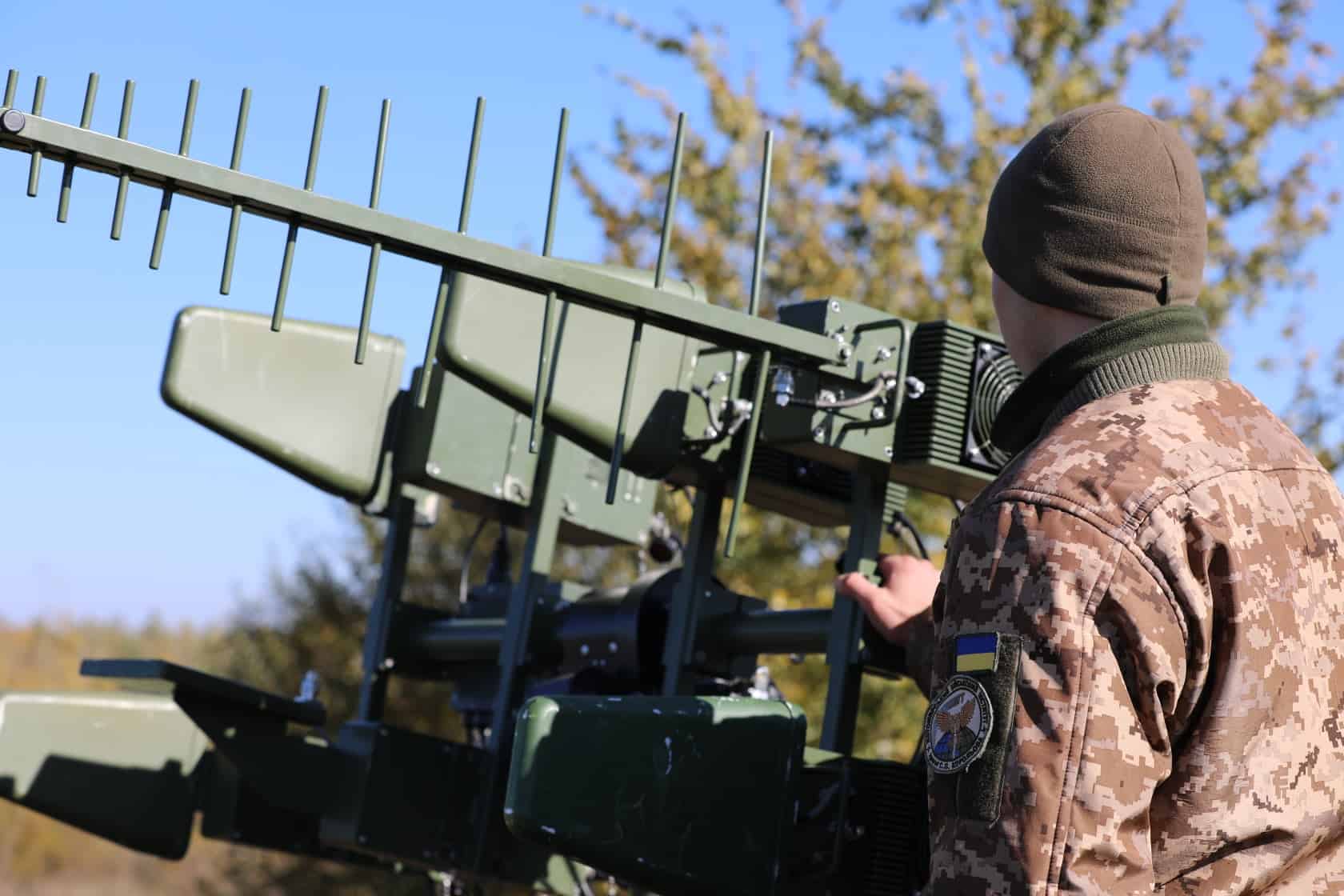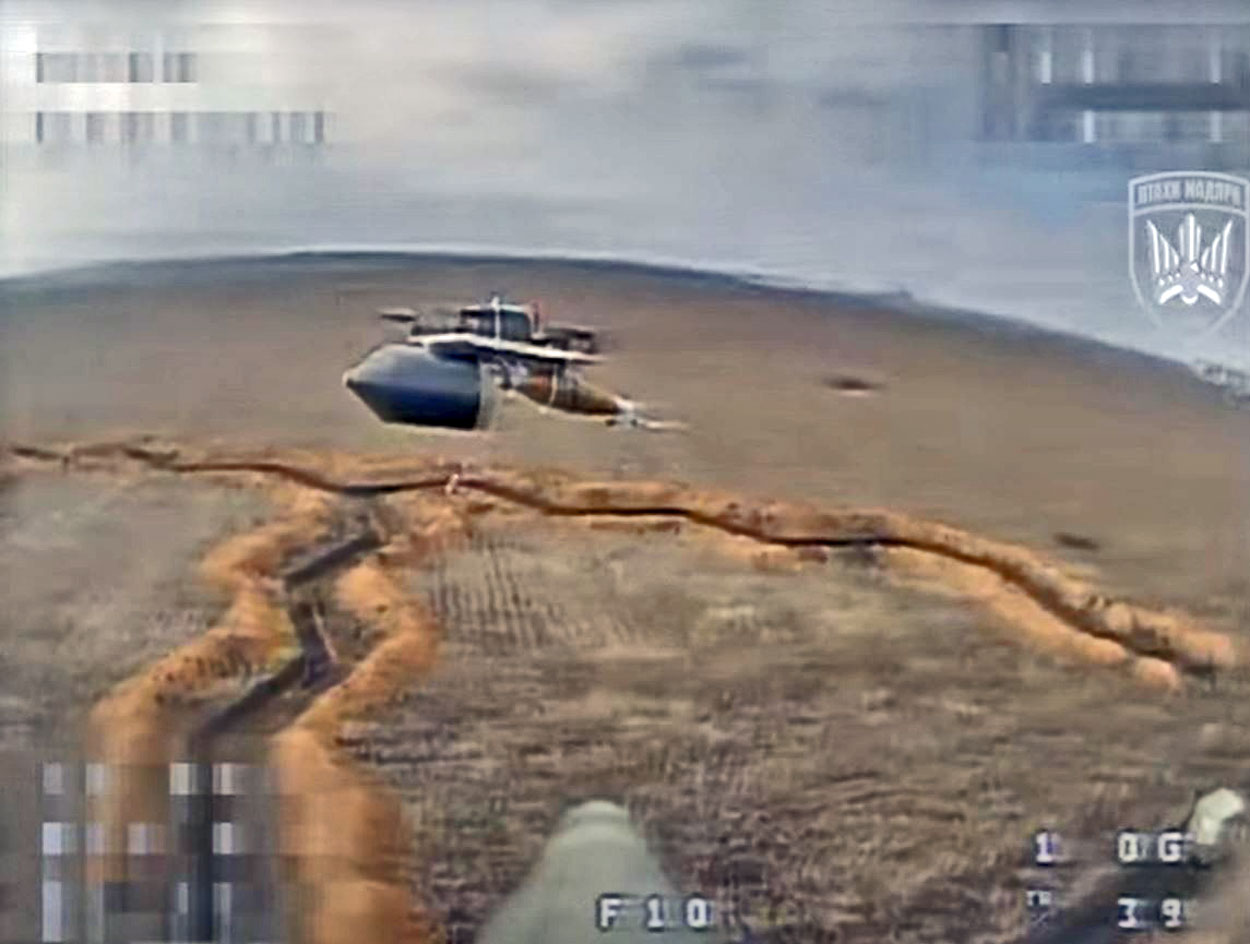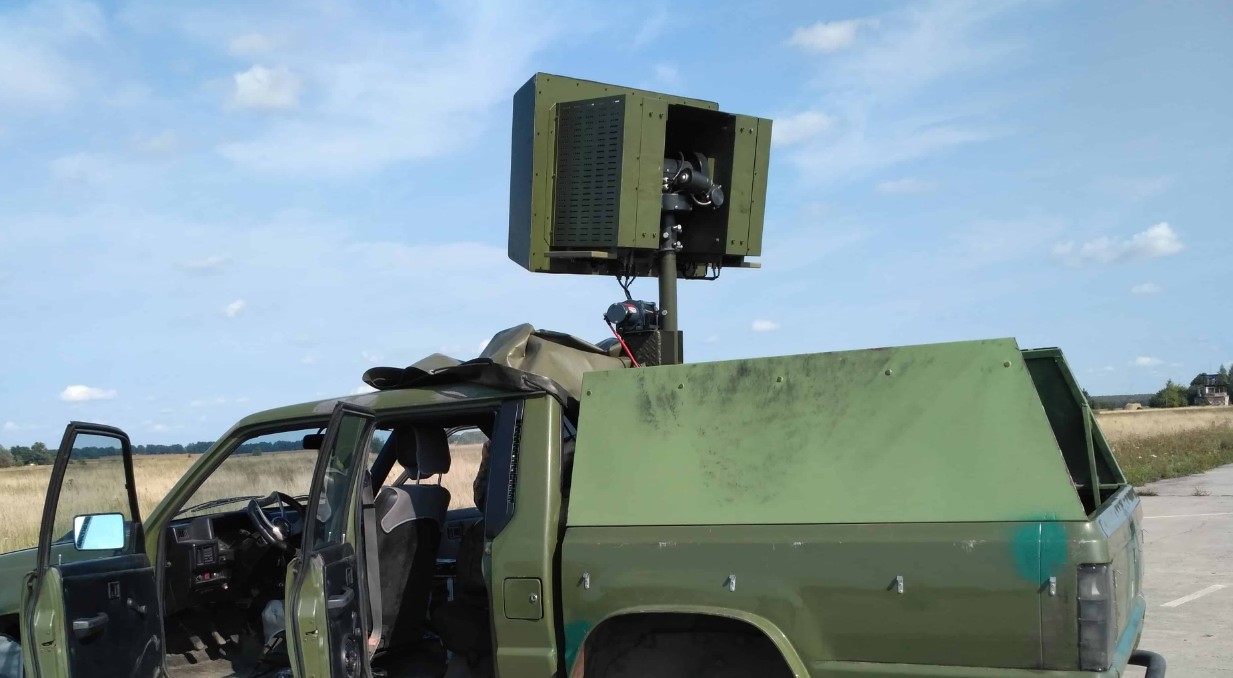Senior Lieutenant Ihor Shutyi, commander of the electronic warfare (EW) company of Ukraine’s 56th Separate Motorized Infantry Brigade, describes how frontline EW systems are struggling to keep up with the rapid evolution of Russian and commercial drone technologies. From early losses near Donetsk to the arrival of fiber-optic FPV drones in 2025, his account reveals how the drone war is steadily pushing traditional jamming systems toward obsolescence.
From silence to saturation: EW enters the battlefield
In his detailed firsthand account titled “Has the era of EW come to an end?“, Shutyi notes that electronic warfare wasn’t always a factor on Ukraine’s front lines. In late 2022, during operations near Donetsk, EW was barely present. Ukrainian units operated Chinese-made commercial drones such as Mavic quadcopters and the larger Matrice 300 RTK with little interference. The officer recalls one veteran Mavic that survived for six months, conducting reconnaissance and dropping munitions without issue.
That changed in January 2023 after the unit relocated to Huliaipole in Zaoporizhzhia Oblast. Within just two weeks, three Mavics were lost or disabled, and a jammed Matrice crashed into a snow-covered field. According to Shutyi, this marked the first real impact of Russian EW on their operations.
As the unit redeployed near Donetsk Oblast’s Bakhmut, drone operators adapted to worsening conditions—using pickups fitted with Starlink, adjusting launch positions based on signal strength, and reacting quickly to jamming attempts. But losses mounted.
“Drones were often lost during the very first flight,” Shutyi wrote in his public account.
Reluctant beginnings of EW inside Ukraine’s own ranks
In the early stages, Ukrainian forces did not universally embrace electronic warfare tools. Shutyi notes that the first EW devices, introduced to his brigade around September 2023, were largely offloaded to reconnaissance platoons because infantry commanders “saw no use for them” and didn’t want the burden of managing extra gear or assigning operators.
That began to change in December 2023, when front-line units started receiving relentless attacks from Russian first-person view (FPV) kamikaze drones. One position, Shutyi reports, was struck by 11 such drones in a single day. Suddenly, commanders began urgently requesting EW tools—signing requisition forms “without even reading them.”
At this point, Ukrainian forces began improvising: adding signal boosters like Alientech, modifying chips, and using captured Russian firmware. A dedicated EW platoon was formed, and within a month, Shutyi was leading a full EW company.
The escalation: From hope to overload
In early 2024, there was cautious optimism. Mounted EW systems like omnidirectional jammers installed on vehicles were effective against FPV drones. Shutyi recalls drivers reporting how enemy drones dropped in front of their pickups, unable to withstand the jamming signal.
But the progress was short-lived. Drone frequencies diversified rapidly. By spring, the standard 900 MHz module was no longer enough. Russian drones began operating in a range from 750 to 1050 MHz. By summer, countering them required four to five modules; by autumn, seven.

This increase in frequency bands brought multiple problems:
-
Size and weight: A single frequency module might be manageable, but multiple modules created heavy, bulky kits that infantry could barely carry. “We tried modular kits for infantry,” Shutyi wrote, “but it only partially solved the problem.”
-
Power demands: Seven 50W modules couldn’t be supported by a pickup truck generator alone. Vehicles needed additional power battery systems like EcoFlow for sustained operation.
A fatal shift: The arrival of fiber-optic FPVs
Shutyi marks the end of 2024 as a turning point—the moment when conventional EW systems began to collapse. The reason: unjammable fiber-optic FPV drones.
Initially dismissed for their cost, lack of maneuverability, and terrain limitations, these drones proved devastating. During Russia’s 2025 winter operations in Kursk Oblast, fiber-optic drones overwhelmed Ukrainian logistics routes.
“There was , in fact, nothing to counter them,” Shutyi admitted.

By spring, Russian FPV drones were reaching 10 km deep into Ukrainian-controlled territory—up from 3 km just months earlier. The depth and scale of their operations grew steadily.
DJI’s next move: The Mavic 4 and Matrice 4T challenge
As if that weren’t enough, commercial drone giant DJI released the Mavic 4 Pro and Matrice 4T. According to Shutyi, citing the manufacturer’s specs, these drones introduced major improvements:
- Multiple operating bands (2.4, 5.2, and 5.8 GHz)
- Enhanced low-light imaging
- Autonomous pathfinding through signal interference zones
- Smoke-penetrating optics
- Integrated laser rangefinders and loudspeakers (“Surrender, you’re surrounded!”)
Although three operating frequencies are officially listed, Shutyi suspects more can be activated via firmware. He also warns about a possible DJI ecosystem that includes dedicated amplifiers, relay drones (e.g., Matrice 30T), and plug-and-play integration—all without the need for custom tinkering.
These drones are already appearing at the front, and their suppression—based on available tools—is currently ineffective.
EW pushed to the rear: The decline of ground-based jammers
As multirotor drones with extended range and stronger connections proliferate, Ukraine’s large vehicle-based EW systems like Bukovel-AD, Nota, Ay-Petri, Damba, Beton, and others are being forced to retreat from front-line positions.

These systems, Shutyi argues, won’t disappear but will become more like helmets or body armor—potentially lifesaving in some moments, but offering no guarantees of protection. The deeper these systems are moved into the rear, the less relevant they become in fast-evolving combat zones.
Toward a new doctrine: Russia’s standardized drone war
Shutyi predicts Russia will eventually phase out manually operated FPV drones in favor of factory-standardized fiber-optic models. These are easier to produce, don’t require operators highly trained for various types of UAVs, and eliminate the need for multiple ground control systems with varying antennas.
In this model:
- Mavic/Matrice 4 will handle reconnaissance and targeting
- FPV bombers will carry out immediate strikes on front-line positions
- Fiber-optic FPVs with varying ranges (5 to 30 km) will attack deeper logistical and artillery targets
This streamlined, cost-efficient system mirrors the ethos of the Kalashnikov rifle: simple, consistent, and deadly.
“Overall, it appears that EW is gradually losing the battle against frontline quadcopters,” Shutyi says, later adding: “The drone-vs-antidrone arms race continues, and simple setups like ‘antenna + jammer + power source’ no longer deliver the needed results.”
The path forward: Kill the eyes, blind the war
With conventional jamming tools falling short, Shutyi emphasizes that the most effective countermeasure may now be eliminating enemy reconnaissance drones.
“If we take out the Mavics, the enemy loses their ‘eyes’,” he writes.
Without real-time aerial visibility, artillery accuracy, drone strikes, and even infantry assaults become far less effective. Shutyi views FPV-kamikaze strikes against enemy Mavics as a cost-effective tactic, even if the economics aren’t perfect. In his view, “trading one FPV for even the cheapest Mavic is worth it.”
The bigger picture: Adapting to the drone age
The war in Ukraine has already rewritten several military doctrines:
- A shift from mobile to positional warfare
- Disappearance of traditional foot reconnaissance in favor of airborne surveillance
- Tanks and BMPs reduced to fire support roles
- Phasing out heavy machine guns on the line of contact due to their vulnerability to drones
- And now, the likely fading of infantry mortars and grenade launchers
In that context, the slow disappearance of EW from the tactical level is no surprise.
“Its visibility, its impact, and even its presence in media will fade,” Shutyi warns.
Still, new tactics are emerging. One example: using FPV drones to target and destroy enemy fixed-wing reconnaissance UAVs like Zala, Orlan, and Molniya—a method successfully implemented by Ukrainian forces in mid-2024.



